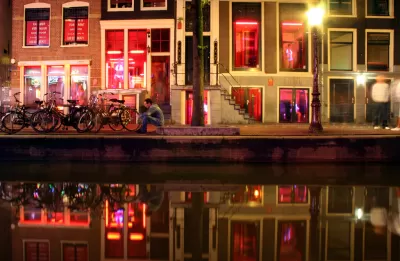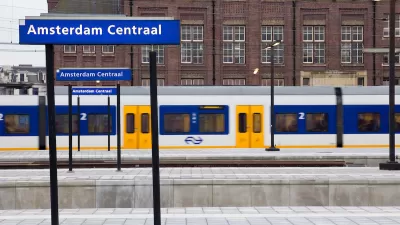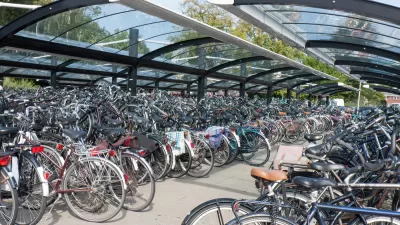In an attempt to force out organized crime and bring in a better class of tourist, the local government has forced the closure of brothels in the city's famed Red Light District.

Amsterdam's famed brothel lined streets in the city's Red Light District are under threat from an effort by the city to gentrify the area with upscale boutiques and restaurants. Beulah Maud Devaney writes in The Guardian, that the government’s efforts have so far been successful in shutting down 126 of the "windows" where tourists walking the streets could see prostitutes advertising their wares. However, the residents and sex workers of the district aren't happy with the changes imposed by the government.
Under the justification of tackling crime, the government forced brothel owners to sell their leases on this extremely valuable real estate. (All land in Amsterdam is owned by the government and leased to landlords.)…
In April 2015, more than 200 sex workers, led by PIC and PROUD, the Dutch sex workers union, marched through Amsterdam’s city centre to protest at the demonisation of their industry and the closure of the windows. The largest such protest in Dutch history drew public attention to the potential downside of gentrifying the red-light district.
Sex workers in the district believe that the government's effort to crack down on organized crime and human trafficking was just an excuse to force the closure of the brothels and open up valuable real estate. Now many are left without work and feeling the loss of their once vibrant community.
FULL STORY: Amsterdam's sex workers: the unlikely victims of gentrification

Planetizen Federal Action Tracker
A weekly monitor of how Trump’s orders and actions are impacting planners and planning in America.

San Francisco's School District Spent $105M To Build Affordable Housing for Teachers — And That's Just the Beginning
SFUSD joins a growing list of school districts using their land holdings to address housing affordability challenges faced by their own employees.

The Tiny, Adorable $7,000 Car Turning Japan Onto EVs
The single seat Mibot charges from a regular plug as quickly as an iPad, and is about half the price of an average EV.

Seattle's Plan for Adopting Driverless Cars
Equity, safety, accessibility and affordability are front of mind as the city prepares for robotaxis and other autonomous vehicles.

As Trump Phases Out FEMA, Is It Time to Flee the Floodplains?
With less federal funding available for disaster relief efforts, the need to relocate at-risk communities is more urgent than ever.

With Protected Lanes, 460% More People Commute by Bike
For those needing more ammo, more data proving what we already knew is here.
Urban Design for Planners 1: Software Tools
This six-course series explores essential urban design concepts using open source software and equips planners with the tools they need to participate fully in the urban design process.
Planning for Universal Design
Learn the tools for implementing Universal Design in planning regulations.
Smith Gee Studio
City of Charlotte
City of Camden Redevelopment Agency
City of Astoria
Transportation Research & Education Center (TREC) at Portland State University
US High Speed Rail Association
City of Camden Redevelopment Agency
Municipality of Princeton (NJ)





























